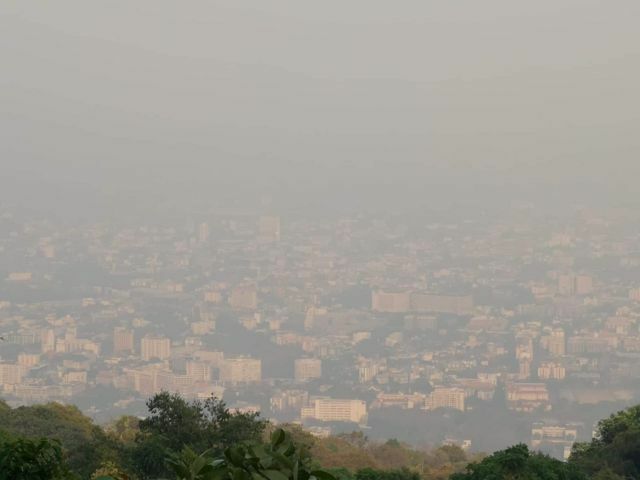Chiang Mai breathes easier: Summer storms bring air quality relief

The air quality in Chiang Mai has significantly improved due to a series of summer storms, causing hazardous haze pollution and ultra-fine particulate matter (PM) 2.5 levels to drop after months of concern. This is welcome news for residents and tourists alike, as the region has been grappling with poor air quality and the impact it has had on both health and the local economy.
Chiang Mai experienced thunderstorms with strong winds and hailstorms over the past week, particularly in Mon Cham and Mae Rim districts. These meteorological events have helped to clear the persistent dust pollution that has plagued the area. Air-quality monitoring conducted by the website IQAir revealed that Chiang Mai’s PM2.5 levels fell to between 39-59 microgrammes per cubic metre (µg/m3) yesterday morning. The safe level established by the Thai government is 50 µg/m3.
Several hotspots were detected in Chiang Mai by the area’s wildfire and haze prevention and resolution centre. Out of a total of six, three were found in national forest reserves, one in a forest conservation area in the Omkoi district, and the remaining two in the Mae Chaem district. Since the start of the year, Chiang Mai has registered an alarming 12,182 hotspots.
The Thai Meteorological Department has predicted that wind speeds will continue to help alleviate dust pollution across the northern region. Furthermore, all 17 northern provinces are expected to experience rain in the coming days.
The Thai Meteorological Department said…
“Summer storms will arrive this week, while the rainy season is due to begin next month.”
The forecast highlights that southern and southeastern winds from the Gulf of Thailand and the South China Sea will envelop Thailand’s upper region, causing temperatures to rise. The northeastern and eastern areas are poised to encounter summer storms that include gusty winds, hailstorms, and lightning until April 29. The department expects these thunderstorms to disperse and affect other regions afterwards.
The improvement in air quality comes as a much-needed respite for Chiang Mai’s inhabitants, who have been enduring unhealthy pollution levels for several months. Airborne pollution of this nature not only jeopardises human health, causing a variety of respiratory and cardiovascular issues but also has the potential to damage ecosystems and the local economy.
Tourism, a key industry for Chiang Mai, has faced challenges due to the pollution crisis, with visitor numbers dropping as travellers opted for cleaner destinations. The recent reduction in pollution levels will undoubtedly be a welcome relief for the tourism sector as well as locals who rely on it for their livelihoods.
Ensuring ongoing improvements to air quality in Chiang Mai and other affected regions will necessitate a concerted effort from government authorities, local communities, and businesses alike. Continued vigilance in monitoring air pollution levels, implementing effective wildfire and haze prevention strategies, and supporting sustainable development initiatives will all contribute to the long-term preservation of Thailand’s environment and the well-being of its citizens.
Latest Thailand News
Follow The Thaiger on Google News:
































